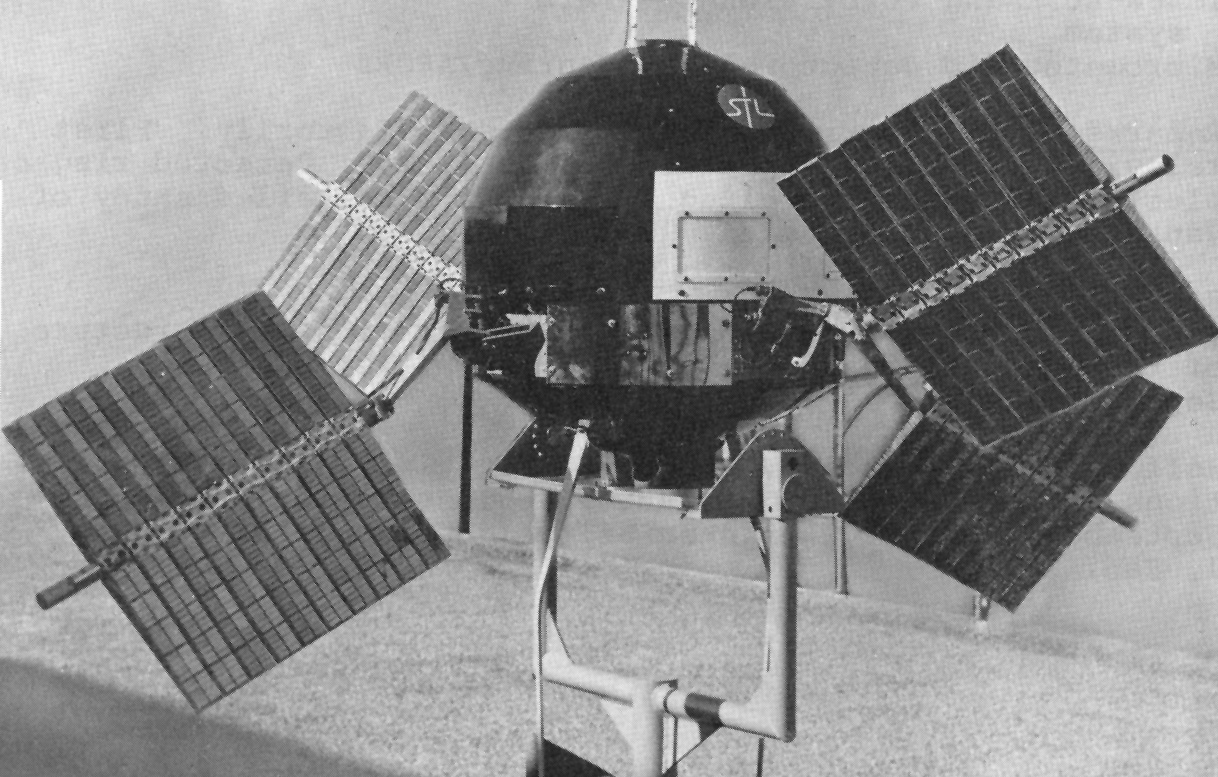Our first space history item is interesting, but not the main event: On October 1, 1949 — 60 years ago today — the Long Range Proving Ground was activated at Cape Canaveral, Florida. It became the Florida Missile Test Range, and eventually Patrick Air Force Base and the Kennedy Space Center.
But the event that elicited this post’s subject line happened 40 years ago today, in 1969, when the European satellite “ESRO-1B” was launched from Vandenberg AFB by a Scout rocket. The NASA press release for the launch is very interesting: it includes pages of background information that must have fed the interest and imagination of every would-be “steely-eyed missile man” in the general public.
I had to grab the press release from the Google cache because the NASA link was broken, and I’ll only copy a few paragraphs here:
September 28, 1969
RELEASE NO: 69-138
FOURTH ESRO SATELLITE TO BE LAUNCHED
A 176-pound satellite carrying eight experiments to study the polar ionosphere, the Northern Lights and related phenomena, is scheduled to be launched by a four-stage Scout rocket from the Western Test Range, Calif., no earlier than Oct. 1, 1969. Called ESRO-1B, the European designed and built satellite is the fourth in a cooperative program between the European Space Research Organization (ESRO) and the National Aeronautics and Space Administration (NASA). The program is carried out under terms of an agreement signed by the two organizations in December 1966, relating to providing ESRO with launching and associated services.
ESRO-1B is a duplicate or backup version of ESRO 1-Aurorae, a cooperative ESRO/NASA project, which was successfully launched into a highly elliptical near polar orbit by NASA on October 3, 1968, and is still operating. The same complement of eight experiments–a series of high-latitude particle detectors, auroral photometers, and Langrnuir probes–is being carried on board ESRO-1B. The experiments were provided by the Technical University of Denmark; Kiruna Geophysical Observatory, Sweden; the Radio and Space Research Station, Slough, England; the University of Oslo, Norway; the University of Bergen, Norway; the Norwegian Defense Research Establishment; and the University College, London, England.
The orbit planned for ESRO-1B is near-polar, inclined 86 degrees to the Equator, with an apogee of 435 kilometers (about 270 statute miles) and a perigee of 400 kilometers (about 248 statute miles). Orbit period will be 92 minutes. Scientific measurements made by the ESRO-1B will be concentrated over Northern Europe to enable correlation between ground-based polar ionosphere observations and measurements made simultaneously with sounding rockets launched from the ESRO launch site at Kiruna, Sweden.
Once injected into orbit, the ESRO-1B will be despun by means of a yo-yo system to about 1 RPM. Final stabilization will occur about 10 days after launch when the spacecraft locks onto the Earth’s magnetic field. This stabilization is achieved by means of a pair of magnets inside the satellite. To minimize oscillations, slender magnetic rods are also mounted inside the satellite.
And so on. On page 10 of the news release:
ESRO-IB FACT SHEET
Launch Window: 30-minute window which changes only slightly from day to day. The window opens at 3:29 p.m., (PDT), October 1, 1969.
Launch Site: Western Test Range, Lompoc, California, Pad SLC-5.
Launch Vehicle: Four-stage solid fuel Scout rocket.
Orbit:
Apogee: 435 km (about 270 statute miles)
Perigee: 400 km (about 248 statute miles)
Period: 92 minutes
Inclination: 86 degrees
Stabilization: Spacecraft is spin stabilized at about 148 rpm initially. Despun to one rpm by yo-yo mechanism and further despun by magnetic system which interacts with Earth’s magnetic field. Stabilization thereafter will be provided by a passive system consisting of two permanent magnets.
I find the inclusion of all the detail fascinating. But maybe that’s understandable, since I still am a would-be rocket scientist.



 by
by 











